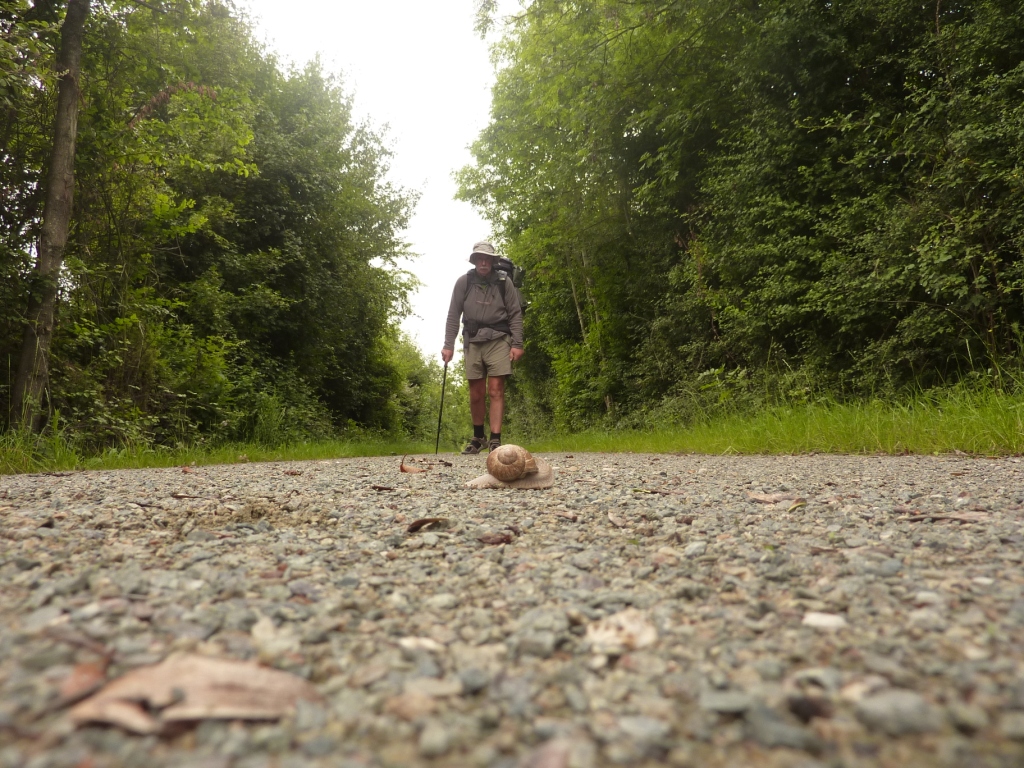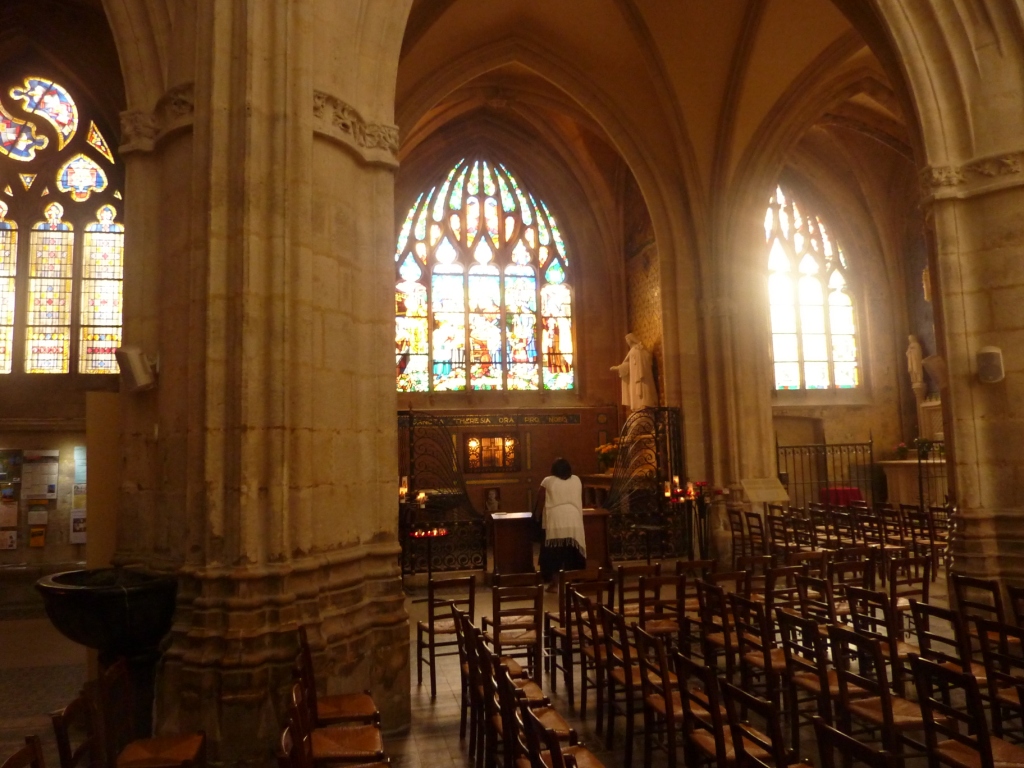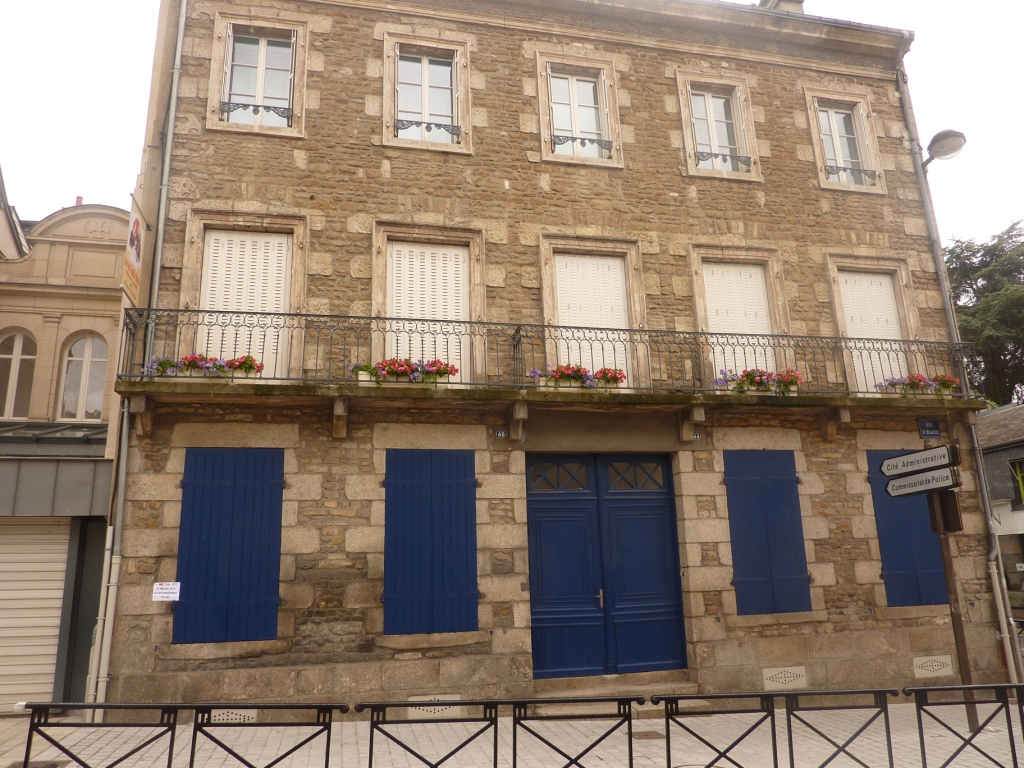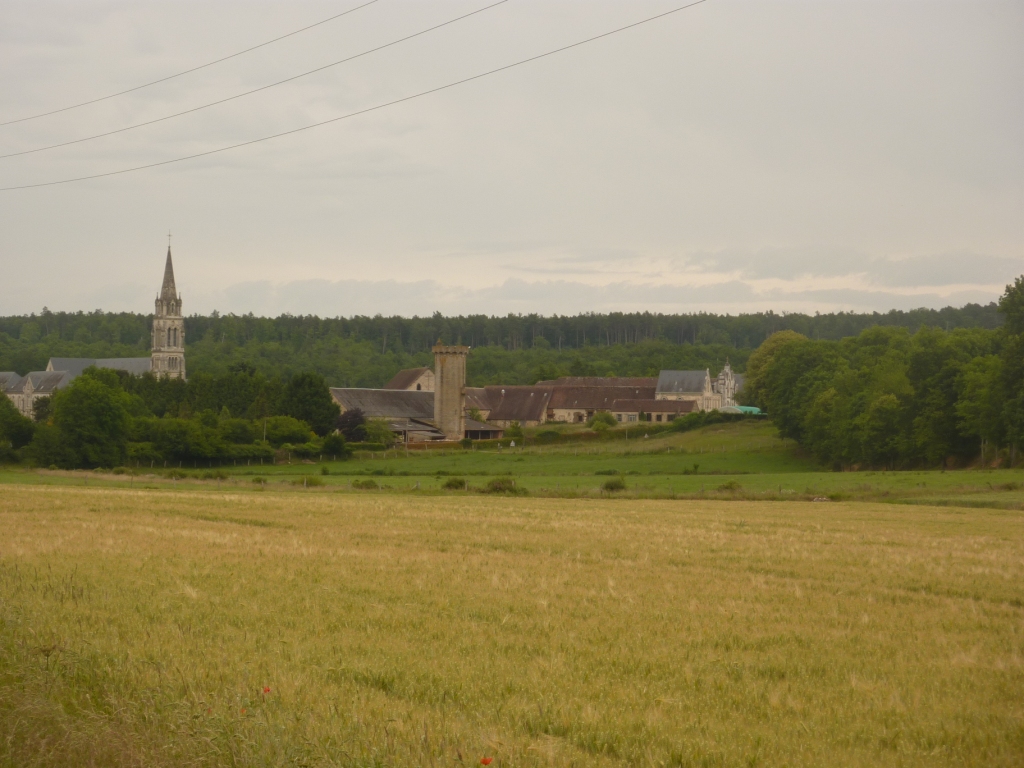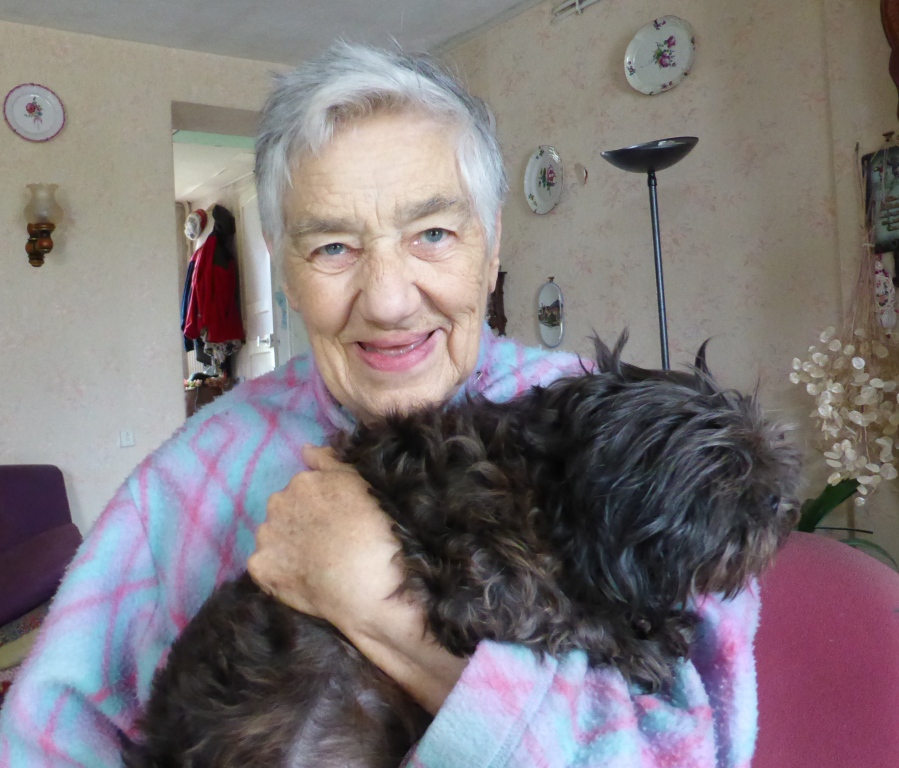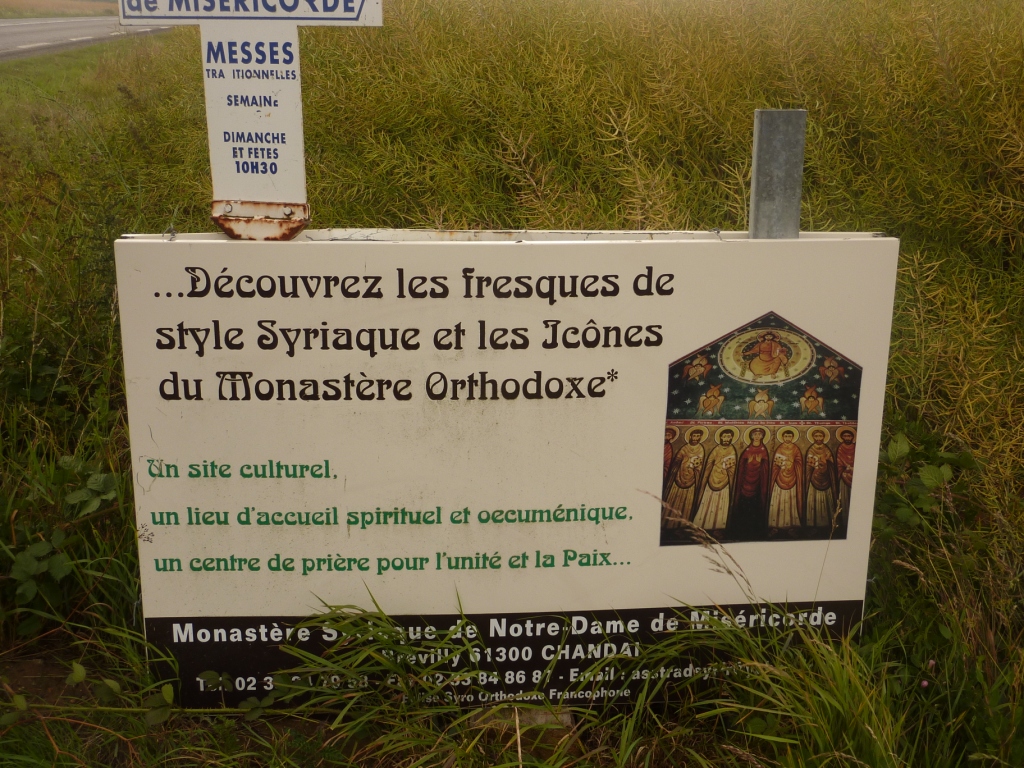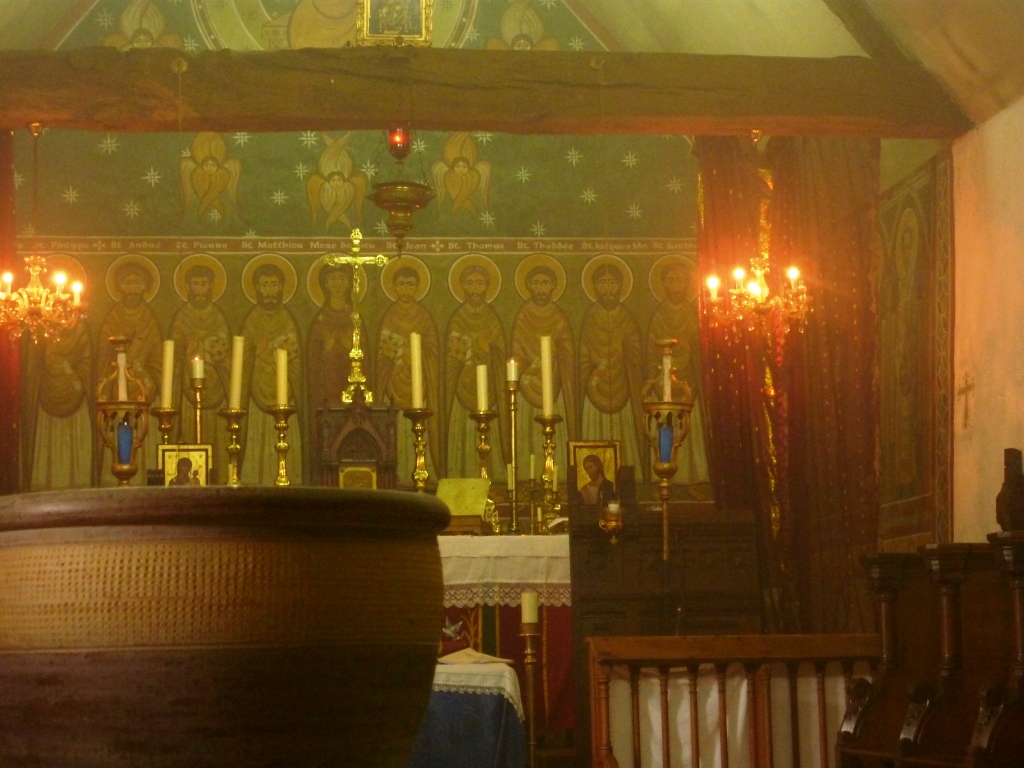Captured by a monk.
Three monasteries:
1.The convent of the Poor Claire’s, Alençon.
In June 2011 my pilgrimage from Loyola to Iona took me through Le Perche, a forested region of Lower Normandy where I had lived for 10 years before moving to Spain. This is a part of France which saw a huge emigration to Canada in the early 17th C.. It also is home to the Trappists who founded a monastery in La Trappe over 900 years ago.
My route had taken me up the Chemin St. Jacques from Irun to Tours and from Tours onwards I improvised passing Le Mans and heading for Alençon, the town where Thérèse de Lisieux was born. Earlier that year I had had an “experience” of Thérèse saying to me that I should pray all the time. Each morning I asked her to help me in this and I still do. I was starting a Camino to Santiago when I was surprised by this message from Theresa of Lisieux. I was on the Camino de Levante from Valencia, which was to take me through Avila, so I asked Theresa of Avila to help me out, too, hoping this would add a bit of weight to the petitioning of the Almighty on my behalf. It seemed appropriate to include Theresa of Calcutta as well particularly, I thought, because I wanted to remind myself of the practical, down to earth action which flows from a love for the poor and the marginalised. This trinity of Theresas is an important part of my morning litanies.
While in Alençon I visited the cathedral very early in the morning and encountered two homeless men. They asked me where I had come from and explained that I was walking back to Scotland. One of them put his hand on my arm and said, “That’s a long way. You’ll need some help.” He then dug into his pocket and took out some change, which he pressed into my hand. Then he embraced me and said, “God bless you and be with you on your journey.” I was very moved and kept the money even though I knew I didn’t need it and he, most certainly did.
Before leaving Alençon I called in at the Convent of the Poor Claire’s. Since my childhood, when my parents took me to Nunraw Abbey in Scotland where the monks baked their own bread and provided quantities of delicious jam, home-made with their own fruit, I have been fascinated by enclosed orders. As a little boy I used to imagine how on earth anyone could go a day without speaking but supposed the great food made up for it. Later on as an adolescent I read Thomas Merton’s autobiography which was published as “Elected Silence” in the UK. [I doubt I would have read it with it’s present title, “The Seven Storey Mountain.”] Although my vocation was to talk and talk and talk, I have always believed that contemplative prayer is the powerhouse which keeps the lights on in our hearts.
I went to the Poor Claire’s to ask them to pray for the intention of my pilgrimage: my reconciliation with my family, my five children, my former wife and my sisters as well as others whom, in my past, had suffered because of me. One of the nuns listened patiently and waited as, at one point, I cried. She assured me that she would ask the community to pray for us all. I recall her reaction of shock when I said “ex-wife” but she clung to my desire for reconciliation within the family. At this stage I couldn’t see what this would require of me and, as the process gradually unfolded, I am sure this visit played a significant part.
2. The Monastery of La Trappe.
The weather in Normdany was wet. The night after I had been in Alençon I slept out by a river. Waking up in a field is a very different experience to awaking under a roof. I always find it energising and suggestive of great possibilities. Because it is very early morning, and silent, time seems to be unlimited. There is no effort needed to go outside into a colder temperature: I am already there and the air is fresh. When I start walking there is little or no traffic and every sound is music, the birds, the river, the cock crowing. The dew and the rain is a challenge but there is always possibility of finding lodging with a hot shower by the end of the day. This Normandy morning I anticipated staying in the monastery of La Trappe.
[mapsmarker layer=”28″]
Alas when I rang up the monastery they said that they only offered hospitality to those who come to stay for several days, usually in organised groups. When I passed by the Abbey I was told that the chapel is only open at certain hours which would have meant waiting a few hours. So I couldn’t visit it that day.
I took the opportunity of carrying on walking and visited some friends nearby. This was an elderly couple who had spent their last 20 years helping people recover from alcohol addiction. Odile had helped her husband recover and the pair had been active in the local group of Vie Libre, an association present throughout France which works with addicts. This elderly lady lives a life of prayer and love, a love which shines from her in her smile and her gentle wisdom and patience.
This couple have been wonderful for me and so I lingered into evening with them before setting off. They offered me a bed but knowing what this would cost them I preferred to continue to the next town which I skirted around without finding anywhere to stay. At night French towns become like graveyards, silent and empty. I continued walking as the rain began to fall heavily bouncing off the road thinking I would maybe find a barn to shelter in for the night.
3. The Syriac Monastery of Our Lady of Mercy in Chandai.
A car suddenly came to a stop beside me and a man opened a window and shouted through the thudding of the rain, “Get in. I’m going to my monastery. You can stay the night.” I refused firmly saying I was walking and really preferred to walk. He insisted and insisted, so I placed my dripping rucksack in the back of his car. I knew of no monastery in this area, but after only a few kilometres he turned down a narrow country road and drew up outside a farmhouse. He took me inside and there were two real monks inside, wearing their impressive habits. They were at table in an open room which served as refectory, kitchen and sitting room. I was welcomed and given soup with bread while I learned that this was a Syriac Orthodox monastery, one of several in France. The monk who had captured me was a postulant. Later I heard about the strict spiritual training of this group which, in this monastery, had its origins in a number of Latin Mass Catholics from the local town of Verneuil-sur-Avre who, fed up with their bishop, became Syriac-Orthodox which solved many of their difficulties with the Catholics and offered a very rich liturgical experience.
I was given a hut in the grounds of this farm, now monastery, for the night and in the morning shared prayer in the chapel which had been converted from a large barn. The experience was rich in ritual and incense and I could understand why many Catholics had chosen this spot for their weekly Mass. Even in such a short stay I lost all sense of strangeness that a corner of Normandy had a living active Syriac-Orthodox following of once discontented Catholics.
After morning prayers was breakfast. For this I was alone for the monks went off to continue with private prayer. Coffee and bread was presented to me by a woman who lived nearby and came every day to housekeep. She asked me about my pilgrimage. For some reason, I explained to her how, in spite of enjoying prayer throughout this journey, I was, from time to time, immersed in doubts about God and the whole spiritual life: that sometimes the sheer irrationality of it all seemed overpowering. “That’s normal,” she said, “Why, Saint Theresa of Lisieux was troubled just the same. And so was Theresa of Avila, and Theresa of Calcutta. You see, these three Theresa’s all had similar doubts.”
I could hardly believe what I was hearing. Astonished I said, “But I pray to those three Theresas every day, to help me pray.” “Yes”, she replied, almost mischievously, “I am not surprised”. Her name was Thérèse.

